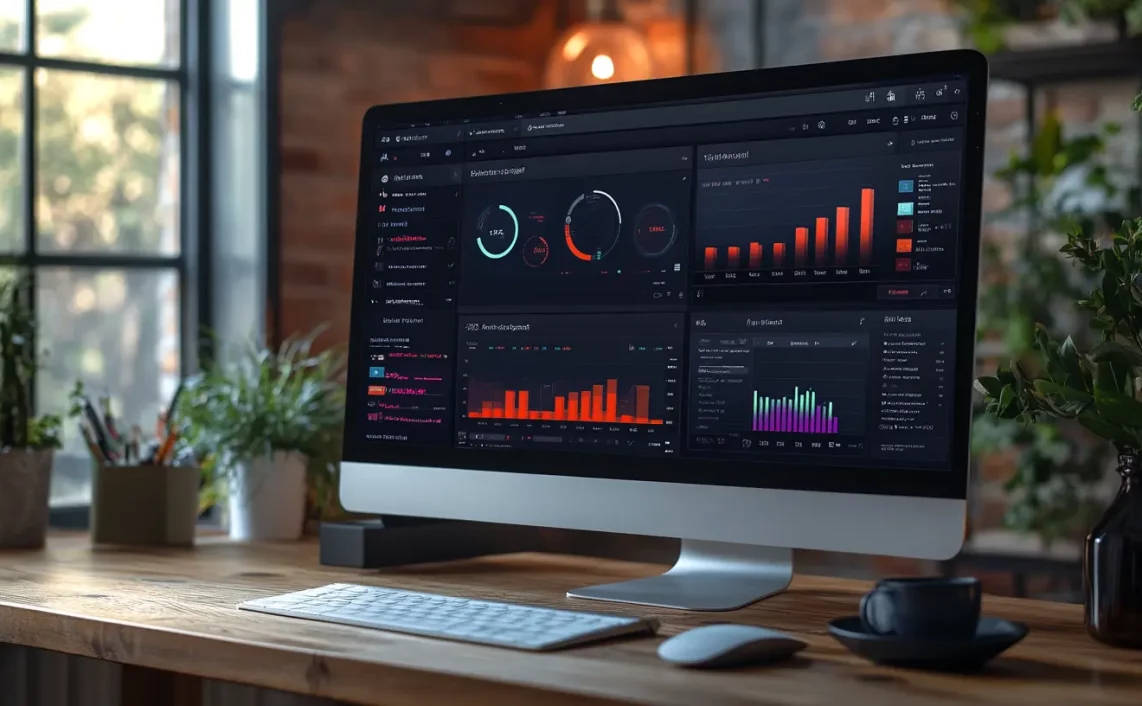Improving Conversion Rates With Google Analytics For Furniture Online Stores

Executive Summary

In the fiercely competitive online furniture market, conversion rates are paramount to success. Google Analytics, a powerful tool, provides valuable insights to optimize your furniture store’s performance and boost conversions. This article delves into utilizing Google Analytics for furniture websites, highlighting key metrics, strategies, and actionable steps to improve your bottom line.

Introduction
The furniture industry is increasingly reliant on online channels. E-commerce has become the primary mode of shopping for furniture, and attracting customers, converting them into buyers, and retaining them is crucial. Google Analytics plays a vital role in this process, offering a comprehensive understanding of your website’s performance, visitor behavior, and conversion trends. By leveraging these insights, you can refine your marketing strategies, enhance user experience, and ultimately drive higher conversion rates.
Frequently Asked Questions
Q1: What is Google Analytics?
Google Analytics is a free web analytics service that allows website owners to track and analyze website traffic. It provides detailed insights into visitor behavior, demographics, and conversion rates, empowering businesses to optimize their websites and marketing campaigns.
Q2: How can I set up Google Analytics for my furniture store?
Setting up Google Analytics is straightforward. Visit the Google Analytics website and create an account. You will need to provide your website’s URL and follow the on-screen instructions. Once set up, you can access real-time data and generate reports.
Q3: What are some key metrics to track in Google Analytics for furniture stores?
Key metrics for furniture stores include:
- Sessions: Total number of user visits to your website.
- Bounce Rate: Percentage of visitors who leave your website after viewing only one page.
- Average Session Duration: Average time visitors spend on your website.
- Pages per Session: Average number of pages visitors browse during a session.
- Conversion Rate: Percentage of visitors who complete a desired action, such as making a purchase.
Understanding User Behavior
Understanding user behavior is crucial to improving conversions. Google Analytics provides detailed insights into how visitors interact with your website. By analyzing these patterns, you can identify areas for improvement and optimize your website for a better user experience.
- Traffic Sources: Identify the channels driving traffic to your website (e.g., organic search, paid advertising, social media). This helps you understand which marketing efforts are most effective.
- Landing Pages: Analyze the performance of different landing pages and identify which ones are driving conversions.
- Site Navigation: Monitor how visitors navigate your website. Are they easily finding the products they’re looking for?
- User Flow: Track the path visitors take through your website. Identify any drop-off points and address them to improve user experience.
Optimizing Product Pages
Product pages are the heart of your furniture store. They should be compelling, informative, and optimized for conversions. Google Analytics provides valuable data to help you optimize these pages.
- Product Views: Analyze the number of views for each product to identify popular items.
- Add-to-Cart Rate: Track the percentage of visitors who add products to their cart. This metric helps you understand product appeal and identify areas for improvement.
- Checkout Abandonment Rate: Monitor the rate at which customers abandon their shopping carts. Identify reasons for abandonment and implement solutions.
- Product Reviews: Analyze customer reviews and identify any recurring issues or positive feedback. Address negative feedback and highlight positive reviews to boost conversions.
Analyzing Customer Demographics
Understanding your target audience is crucial for tailoring your marketing efforts and product offerings. Google Analytics allows you to segment your audience based on demographics, interests, and behavior.
- Age and Gender: Identify the demographics of your visitors to understand who is interested in your products.
- Location: Analyze the geographical location of your visitors to target your marketing campaigns effectively.
- Interests: Determine the interests of your visitors to understand their preferences and tailor your marketing messages accordingly.
- Device Usage: Identify the devices (desktop, mobile, tablet) your visitors use to access your website. This helps you optimize your website for different platforms.
Implementing Effective Marketing Strategies
Google Analytics provides valuable data to refine your marketing campaigns and maximize their impact. By analyzing website traffic, user behavior, and conversion rates, you can optimize your marketing efforts and drive more conversions.
- Campaign Tracking: Track the performance of different marketing campaigns to identify which ones are most effective in driving traffic and conversions.
- Attribution Modeling: Understand how different marketing channels contribute to conversions. This helps you allocate your marketing budget effectively.
- Retargeting Campaigns: Target visitors who have previously shown interest in your products but haven’t made a purchase.
- Email Marketing Optimization: Analyze email open and click-through rates to optimize your email campaigns and deliver relevant content to your subscribers.
Conclusion
By leveraging the power of Google Analytics, furniture online stores can gain valuable insights into user behavior, website performance, and conversion trends. This data empowers them to make informed decisions, optimize their website, and implement effective marketing strategies. By focusing on key metrics, understanding user behavior, and refining their product pages and marketing campaigns, furniture stores can significantly improve their conversion rates and drive business growth.
Keywords:
- Google Analytics
- Furniture Online Stores
- Conversion Rates
- E-commerce
- User Behavior
- Marketing Strategies
- Website Optimization
- Product Pages
- Customer Demographics







